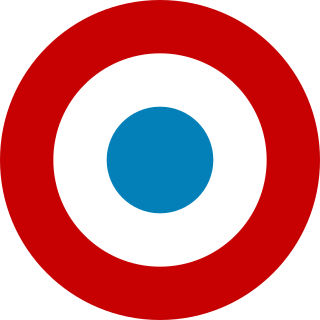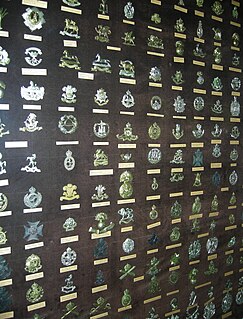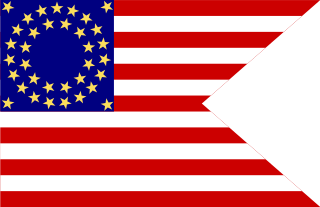Description
The basis for the Headquarters Air Force badge is Air Force heritage and the design incorporates many elements from the Department of the Air Force Seal.
The predominant colors of the badge are ultramarine blue and gold, the colors of the Air Force through transition from the Army Air Corps. At the center of the badge is a gilt American bald eagle, a symbol of the United States and air power. The eagle is holding an olive branch and a bundle of 13 arrows, denoting the power of peace and war—the heart of the Air Force mission. The Air Force shield is at the core of the eagle. On the background is a blue pentagon, representing The Pentagon.

The United States Army Air Corps (USAAC) was the aerial warfare service of the United States of America between 1926 and 1941. After World War I, as early aviation became an increasingly important part of modern warfare, a philosophical rift developed between more traditional ground-based army personnel and those who felt that aircraft were being underutilized and that air operations were being stifled for political reasons unrelated to their effectiveness. The USAAC was renamed from the earlier United States Army Air Service on 2 July 1926, and was part of the larger United States Army. The Air Corps became the United States Army Air Forces (USAAF) on 20 June 1941, giving it greater autonomy from the Army's middle-level command structure. During World War II, although not an administrative echelon, the Air Corps (AC) remained as one of the combat arms of the Army until 1947, when it was legally abolished by legislation establishing the Department of the Air Force.

The bald eagle is a bird of prey found in North America. A sea eagle, it has two known subspecies and forms a species pair with the white-tailed eagle. Its range includes most of Canada and Alaska, all of the contiguous United States, and northern Mexico. It is found near large bodies of open water with an abundant food supply and old-growth trees for nesting.

The olive branch is a symbol of peace or victory deriving from the customs of ancient Greece and found in most cultures of the Mediterranean basin. It became associated with peace in modern Europe and is also used in the Arab world.
A silver wreath, an ancient symbol of victory, encircles the badge and meets the old Army Air Corps roundel. The eagle holds a streamer with the Latin motto "E pluribus unum," which means "Out of many, one," and represents the original 13 colonies forming into one nation.

A wreath is an assortment of flowers, leaves, fruits, twigs, or various materials that is constructed to form a ring.

A roundel is a circular disc used as a symbol. The term is used in heraldry, but also commonly used to refer to a type of national insignia used on military aircraft, generally circular in shape and usually comprising concentric rings of different colours. Other symbols also often use round shapes.

E pluribus unum —Latin for "Out of many, one" —is a 13-letter traditional motto of the United States, appearing on the Great Seal along with Annuit cœptis and Novus ordo seclorum, and adopted by an Act of Congress in 1782. Never codified by law, E pluribus unum was considered a de facto motto of the United States until 1956 when the United States Congress passed an act, adopting "In God We Trust" as the official motto.

The Legion of Merit (LOM) is a military award of the United States Armed Forces that is given for exceptionally meritorious conduct in the performance of outstanding services and achievements. The decoration is issued to members of the seven uniformed services of the United States as well as to military and political figures of foreign governments.

The Defense Superior Service Medal (DSSM) is a senior American military decoration of the Department of Defense, awarded to members of the United States Armed Forces who perform "superior meritorious service in a position of significant responsibility".

The flag of the United States Marine Corps is the flag used to represent the U.S. Marine Corps, as well as its subsidiary units and formations.

The Defense Meritorious Service Medal (DMSM) is an award bestowed upon members of the United States military by the United States Department of Defense. In the order of precedence of the United States Armed Forces, it is worn between the Purple Heart and the Meritorious Service Medal. The medal is awarded in the name of the Secretary of Defense to members of the Armed Forces who, while serving in a joint activity, distinguish themselves by non-combat outstanding achievement or meritorious service, but not of a degree to warrant award of the Defense Superior Service Medal.
An aviator badge is an insignia used in most of the world's militaries to designate those who have received training and qualification in military aviation. Also known as a Pilot's Badge, or Pilot Wings, the Aviator Badge was first conceived to recognize the training that military aviators receive, as well as provide a means to outwardly differentiate between military pilots and the “foot soldiers” of the regular ground forces.

A cap badge, also known as head badge or hat badge, is a badge worn on uniform headgear and distinguishes the wearer's nationality and/or organisation. The wearing of cap badges is a convention commonly found among military and police forces, as well as uniformed civilian groups such as the Boy Scouts, civil defence organisations, ambulance services, customs services, fire services etc.

The Recruiter Badge is a decoration of the United States uniformed services that is awarded to personnel who have performed recruitment duties as service recruiters. The Recruiter Badge is issued by every branch of the U.S. uniform services except for the U.S. Marine Corps and the NOAA Commissioned Corps. With the exception of the U.S. Army, a Recruiting Service Ribbon is also awarded to those personnel who have completed successful tours as uniform service recruiters.

The U.S. military issues instructor badges to specially training military personnel who are charged with teaching military recruits the skills they need to perform as members of the U.S. Armed Forces or teach continuing education courses for noncommissioned officers and officers in the military. With the exception of the U.S. Army and U.S. Coast Guard, these badges are considered temporary military decorations and must be surrendered upon completion of one's duty as a military instructor. Because of this, the U.S. Air Force, U.S. Navy, and U.S. Marine Corps award Drill Instructor Ribbons as a permanent decoration to recognize service members who have qualified and performed as military instructors.

The Meritorious Service Medal (MSM) is a military award presented to members of the United States Armed Forces who distinguished themselves by outstanding meritorious achievement or service to the United States subsequent to January 16, 1969.

Insignias and badges of the United States Navy are military "badges" issued by the United States Department of the Navy to naval service members who achieve certain qualifications and accomplishments while serving on both active and reserve duty in the United States Navy. Most naval aviation insignia are also permitted for wear on uniforms of the United States Marine Corps.

In the United States Army, Navy, Marine Corps, Coast Guard and Air Force, a guidon is a military standard that company/battery/troop or platoon-sized detachments carry to signify their unit designation and branch/corps affiliation or the title of the individual who carries it. A basic guidon can be rectangular, but sometimes has a triangular portion removed from the fly.

A peaked cap, forage cap, barracks cover or combination cap is a form of headgear worn by the armed forces of many nations, as well as many uniformed civilian organisations such as law enforcement agencies and fire departments. It derives its name from its short visor, which was historically made of polished leather but increasingly is made of a synthetic substitute.

A shoulder sleeve insignia, is an embroidered patch worn on some uniforms of the United States Army. It is used by major formations of the U.S. Army; each formation has a unique formation patch. The U.S. Army is unique among the U.S. Armed Forces in that all soldiers are required to wear the patch of their headquarters as part of their military uniforms.

The United States Air Force Honor Guard is the official ceremonial unit of the United States Air Force and is assigned to Joint Base Anacostia-Bolling, Washington D.C.

Branch insignia of the United States Army refers to military emblems that may be worn on the uniform of the United States Army to denote membership in a particular area of expertise and series of functional areas. Army branch insignia is similar to the line officer and staff corps officer devices of the U.S. Navy as well as to the Navy enlisted rating badges. The Medical, Nurse, Dental, Veterinary, Medical Service, Medical Specialist, Chaplains, and Judge Advocate General's Corps are considered "special branches", while the others are "basic branches".

The Uniforms of the United States Marine Corps serve to distinguish Marines from members of other services. Among current uniforms in the United States Armed Forces, the Marine Corps dress uniforms have been in service the longest. The Marine Dress Blue uniform has, with few changes, been worn in essentially its current form since the late 19th century.

The United States Air Force uniform is the standardized military attire worn by airmen of the United States Air Force. Specific Air Force Instructions address standardized wear that is identical for members of both the Active Component and that of the service's two reserve components that comprise the Air Reserve Component, that being the Air Force Reserve and the Air National Guard. This includes personnel in the Air Force's sole enlisted accession program, Basic Military Training (BMT), and the three USAF commissioned officer accession programs: Officer Training School (OTS) officer trainees, college/university level Air Force Reserve Officers' Training Corps (AFROTC) cadets and United States Air Force Academy (USAFA) cadets. Provisions are also included for authorized wear on certain occasions by honorably retired career members of the Air Force.

The 38th Air Defense Artillery Brigade is an inactivated United States Army unit which provided air defense for the Republic of Korea. Based at Osan Air Base from 25 May 1961 until 31 July 1981, its last assignment was as a major subordinate command in the Eighth United States Army. It was initially formed as the 38th Artillery Brigade in 1918.

Berets have been a component of the uniforms of many armed forces throughout the world since the mid-20th century. Military berets are usually pushed to the right to free the shoulder that bears the rifle on most soldiers, but the armies of some countries, mostly within Europe, South America and Iran have influenced the push to the left.

The United States Air Force Inspector General Badge is a United States Air Force duty badge authorized for wear by all personnel who are assigned to the United States Air Force Inspector General duty positions. The badge is required to be worn by any personnel performing official duties and assigned to an IG office after completing required training and taking an official oath.





























